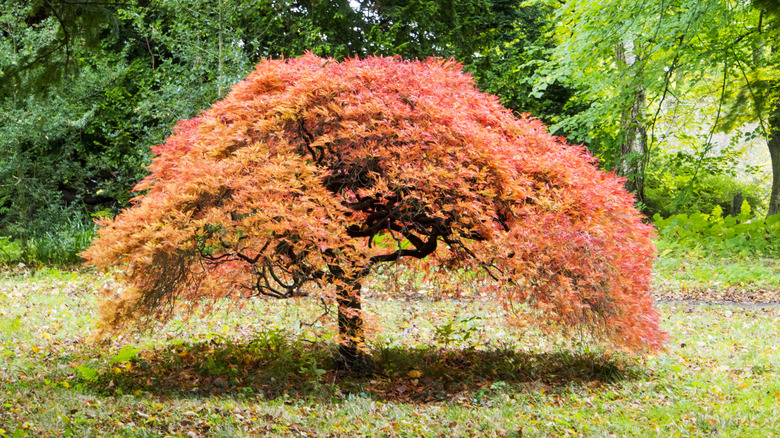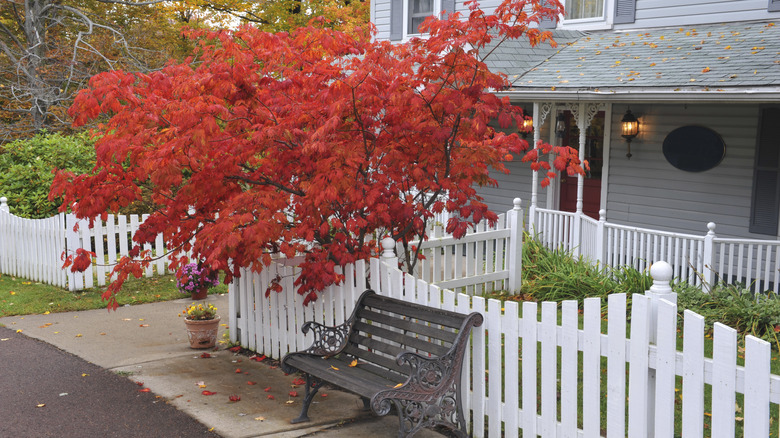The Gorgeous Tree HGTV's Erin Napier Uses To Add A Pop Of Red To A Landscape
Erin Napier of the beloved HGTV show "Home Town" knows a thing or two about making a house a home and a yard an outdoor retreat. Erin and her husband Ben don't just consider the interiors of homes but also the exterior and landscape, creating memorable outdoor spaces for friends and family. If you've seen "Home Town," you know Erin and Ben have some strong feelings about trees and plants, from opting to remove toxic sago palms for the health of pets to cutting down stinky Bradford pear trees. One type of tree they almost always try to save during their remodels, and sometimes even add into landscapes to add more color, is the beautiful red Japanese maple tree.
Thanks to the Japanese maple's (Acer palmatum) brilliant color, slow growth, and manageable height, it makes a fantastic landscape plant. Their roots are generally considered less likely to damage sidewalks and concrete than many other tree roots as well. Despite hailing from Japan, these gorgeous maples aren't considered invasive or overly aggressive, making them great options not just for homeowners in Napier's hometown of Laurel, Mississippi, but also for most people in zones 5 through 8.
Caring for Japanese maples
Japanese maples are known for being vulnerable to stress due to sudden temperature changes and sun scorch, so it's best to plant your tree in a somewhat protected location where it can receive dappled sunlight. Japanese maples also benefit from fertile and slightly acidic soil that is moist and well-draining, which is especially important if the tree is in direct sunlight. While Japanese maples don't generally require significant amounts of fertilizer, they can be given a slow-release fertilizer in early spring if necessary. However, it's best to check the health of your soil before fertilizing.
Because Japanese maples, like many maple trees, are prone to "bleeding" or leaking sap when pruned in spring, the best time of year to prune is generally in late summer. While Japanese maples don't generally require significant pruning, it's always a good idea to remove dead or damaged branches or branches that interfere with sidewalks.
Using Japanese maples in your own landscape
Regardless of your yard's size, there's a good chance there is a Japanese maple tree that is right for you. From the elegant Bloodgood Japanese maple, which boasts purplish-red leaves and a rounded canopy that seldom reaches above 20 feet, to the petite Mikawa yatsubusa cultivar, which has a more shrublike appearance with a height of about 6 feet and a spread of around 4 feet, Japanese maples come in a surprising number of shapes and sizes. You can generally choose whether to train your tree to have one trunk or multiple stems as well, adding to this species' versatility.
While Japanese maples aren't especially large trees, it's still important to plant taller cultivars at least 8 feet from your home to protect your house's foundation. Because Japanese maples are vulnerable to stress, it's also important to remember to use mulch around them. It not only helps to keep their roots cool and moist, but it also protects the tree from sudden temperature shifts.


